Introduction
Do Robins Reuse Their Nests: Robins are renowned for their nest-building prowess, constructing sturdy cup-shaped nests using a variety of materials, including twigs, grasses, mud, and even bits of string or paper. These nests are typically perched in trees, shrubs, or even on human-made structures, providing a safe haven for raising their young. However, the question of whether robins reuse their nests is not one easily answered with a simple yes or no.
To uncover the secrets of robin nest reuse, we delve into the intricate lives of these birds, examining their annual breeding cycles, environmental factors, and the role of nest location. Along the way, we discover that robins exhibit a fascinating mix of behaviors. While some robins indeed reuse their nests, others opt for fresh construction each breeding season. The reasons behind these choices are as diverse as the individual robins themselves, influenced by factors like nesting success, predation risk, and available resources.
This inquiry into the nesting habits of robins extends beyond mere curiosity; it offers valuable insights into the broader ecology of these birds and their interactions with their environment. Understanding whether and why robins reuse their nests can illuminate the delicate balance between adaptability and tradition in the natural world. Join us on this captivating journey as we unravel the mysteries of robins and their nests, revealing the intricate tapestry of life that unfolds in our own backyards and beyond.
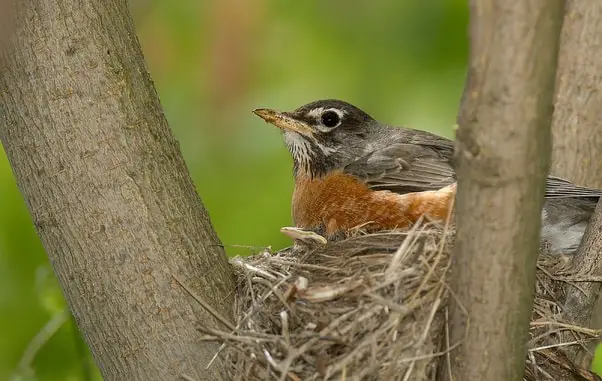
Do robins go back to the same nest every year?
Do robins return to the same place each year and do they use the same nest? A: They do not normally use the same nest year after year, but if they have good nesting success in a place, they very often return there. If not, they may move even within the same season.
Availability of Food: One of the primary factors that influence robin nest site selection is the availability of food. Robins are omnivorous birds, and they require a diet rich in insects, earthworms, fruits, and berries. They will often choose nesting sites where food sources are abundant and easily accessible.
Nesting Materials: Robins are known for building cup-shaped nests made of twigs, grass, and mud. The availability of suitable nesting materials in the vicinity can play a significant role in their choice of nesting site.
Predators: Robins are wary of potential predators, such as squirrels, snakes, and other birds. They tend to select nest sites that are well-hidden and provide some protection from these threats.
Previous Nest Success: While robins may not return to the exact same nest year after year, they might return to the same general area if they have had previous nesting success there. They are more likely to choose a familiar location where they have successfully raised offspring in the past.
Should I empty a robins nest?
NestWatch suggests cleaning out nest boxes or birdhouses at the end of the breeding season. This isn’t absolutely necessary; often birds will clean it out themselves, but you can lend them a helping hand.
Nest Abandonment
Robins invest a significant amount of time and effort in building their nests and caring for their eggs and young. Interfering with a nest can lead to nest abandonment, which can have negative consequences for both the adult birds and their offspring. If the nest is still active and the adult robins are tending to it, it’s best to leave it undisturbed.
Assess the Situation
If you are concerned about the nest’s location, such as it being in a hazardous area like a high-traffic zone or vulnerable to predators, consider other alternatives. You may be able to create a safer environment for the nest without removing it. For instance, you can temporarily restrict access to the area or provide some form of protection against predators.
Seek Expert Advice
If you are uncertain about what to do with a robin’s nest, it is advisable to seek advice from local wildlife experts or organizations dedicated to bird conservation. They can provide guidance tailored to your specific situation and ensure that the best interests of the birds and their young are considered.
What happens to robins once they leave the nest?
Robin is Ready
Fledglings are strong, independent birds just 12-15 days after leaving the nest. By summer’s end, most juveniles look like adults. During this time, they are living and flying with a flock. They’ll keep learning from the experienced adults in the flock.
Learning to Fly
The process of leaving the nest, known as fledging, is a significant milestone in a young robin’s life. Typically, robins begin to fledge around 13 to 15 days after hatching. Before they take their first flight, they spend several days hopping around on nearby branches, flapping their wings, and strengthening their muscles. This process helps them develop the coordination and strength needed for successful flight.
Parental Care
Even after leaving the nest, young robins continue to rely on their parents for care and protection. The adult robins provide food, guidance, and protection as the fledglings explore their surroundings and learn essential survival skills. The parents teach their young to forage for insects, worms, and other food sources, helping them develop the necessary hunting skills.
Gradual Independence
As the weeks go by, the young robins become more independent. They start to venture farther from the nest and rely less on their parents for food. During this time, they learn to recognize and pursue their own sources of nourishment. This gradual transition to independence is crucial for their long-term survival in the wild.
Migratory Behavior
Robins are known for their migratory behavior, with many populations migrating south for the winter. Young robins often join their parents or other mixed-age flocks as they prepare for migration. Learning migration routes and timing is a critical aspect of their education. Migratory robins rely on their instincts and experience to navigate the challenging journey to their wintering grounds and back to their breeding areas in the spring.
Why do robins abandon their nests?
Typically, birds may abandon nests for a variety of reasons: they may have been disturbed too often, often by predators or human activity; something may have caused the eggs to be nonviable (infertility, environmental conditions, or a cracked eggshell); or the parents themselves could have run into trouble.
Human Disturbance
One of the most common reasons robins abandon their nests is human disturbance. Robins often choose nesting sites in close proximity to human habitation, such as gardens, parks, and yards. Loud noises, frequent human activity, or even direct interference with the nest can stress adult robins, making them feel threatened and causing them to abandon their nest. It’s essential to be cautious and respectful of nesting birds to minimize disturbances.
Nest Predators
Robins are diligent parents, but they are not always successful in defending their nests against predators. Common nest predators for robins include squirrels, raccoons, snakes, and various species of birds, such as crows or jays. When adult robins perceive a high risk of predation, they may choose to abandon the nest and its contents to ensure their own survival.
Parasitic Cowbirds
Brown-headed cowbirds are brood parasites that lay their eggs in the nests of other bird species, including robins. Cowbird eggs typically hatch earlier than robin eggs, and the cowbird chicks often outcompete the robin nestlings for food, sometimes even pushing them out of the nest. In response to the presence of a cowbird egg or chick, adult robins may abandon the nest to avoid raising a parasitic bird’s offspring.
Do birds mourn the loss of their nest?
So birds certainly possess the capacity to mourn—they have the same brain areas, hormones, and neurotransmitters as we do, “so they too can feel what we feel,” Marzluff says—but that doesn’t mean we know when it’s happening.
No Scientific Evidence of Grief
While birds exhibit a wide range of complex behaviors, there is no scientific evidence to suggest that they experience grief in the way humans do. Grief is a complex emotion involving self-awareness and understanding of death, which is not well-documented in the animal kingdom. Birds, like other animals, primarily react to immediate stimuli and survival instincts.
Protective Instincts
Birds invest significant time and effort in building nests and raising their offspring. When a nest is lost or destroyed, their primary concern is the safety and well-being of their young. The adult birds are more likely to react with a sense of urgency and heightened protective instincts rather than mourning.
Rapid Nest Rebuilding
Many bird species are known for their ability to rebuild nests quickly if they are damaged or destroyed. They do so to protect their eggs or chicks from predators and the elements. The focus is on practicality and ensuring the survival of their genetic lineage rather than an emotional response to the loss of the previous nest.
Bond with Offspring
While birds may not mourn the loss of their nests, they do have strong bonds with their offspring. The parental bond is crucial for the survival and nurturing of young birds. Adult birds will continue to care for and protect their chicks even after a nest is lost, demonstrating their dedication to the well-being of their progeny.
What to do with empty robin’s nest?
If possible, add the discarded nest to a compost pile or dispose of it in a plastic bag so predators are not attracted to the nesting area where young birds may still be at risk. Nesting material will naturally decompose, or may even be reused by other nesting birds.
Leave it Be
One option is to simply leave the empty robin’s nest in place. Nests can serve as a natural curiosity and a reminder of the fascinating world of birds. Empty nests can also provide nesting material for other bird species or be repurposed by other animals, such as squirrels or insects, for their own use.
Study and Learn
An empty robin’s nest can be an educational opportunity. You can carefully examine the nest to learn more about the materials used, the construction techniques, and the size of the nest. This can be an engaging activity for children or for anyone interested in bird biology and behavior.
Document and Record
Consider taking photographs or making sketches of the empty nest. These visual records can be valuable for personal documentation or for sharing with others who have an interest in birds and nature. Note the location of the nest and any interesting observations you make.
Create a Nature Display
If you’re a nature enthusiast or educator, an empty robin’s nest can be a valuable to a nature display or educational exhibit. You can use it to teach others about bird nesting behaviors, the role of nests in bird survival, and the importance of protecting bird habitats.
Dispose Responsibly
If you decide not to keep the empty nest or use it for educational purposes, it’s essential to dispose of it responsibly. You can return the nest to the ground where you found it, as it may serve as a source of natural materials for other wildlife or decompose naturally. Avoid removing nests from protected areas or wildlife reserves, as this may be prohibited.
What happens if you touch a robin’s nest?
In most cases, the parents are nearby and may be waiting for you to leave the area. Touching animals can also result in diseases passing from wildlife to humans, or vice versa. However, if you do inadvertently happen to touch a bird’s egg or nest, rest assured that your scent alone won’t cause the parents to flee.
Scent Transfer
One of the primary reasons to avoid touching a robin’s nest is scent transfer. Birds have a keen sense of smell, and they can detect human scent on their nests and eggs. If you touch a nest, your scent may be left behind on the eggs or chicks. This can potentially alert predators, such as raccoons or snakes, to the presence of the nest, putting it at greater risk.
Abandonment
Robins, like many other bird species, may abandon their nests if they perceive a threat. If an adult robin sees a human handling its nest or young, it may become stressed or agitated, leading to nest abandonment. This can have serious consequences for the survival of the nestlings.
Egg Damage
The eggs in a robin’s nest are delicate and can be easily damaged. Handling the eggs can cause cracks or fractures, which can be fatal to the developing embryos. Damaged eggs may not hatch, or if they do, the chicks may have reduced chances of survival due to injury or exposure.
Stress to Nestlings
If the nest contains young nestlings, handling them can cause significant stress. Baby birds are sensitive to disturbance, and excessive handling can lead to injury or even death. The parents are better equipped to care for and protect their young.
Do robins remove unhatched eggs?
After the other babies are a day or two old, the parents get rid of unhatched eggs just in case one of the growing babies accidentally crushes it. Rotten eggs are no fun! There is also a chance that there really was a healthy baby inside the egg.
Camouflaging Unhatched Eggs
Robins are known for their meticulous nest-building skills, and they take great care in constructing nests that provide both security and camouflage for their eggs. The nests are typically cup-shaped and made from materials like twigs, grass, and mud. The eggs, usually blue-green in color, are well-camouflaged within the nest, making them less visible to predators.
Abandoning Unsuccessful Eggs
Robins are attentive parents and invest a significant amount of time and effort in incubating their eggs and raising their young. However, if an egg is determined to be infertile or if the developing embryo dies for some reason, robins may abandon the unhatched egg. This behavior is thought to be an instinctual response to reduce the risk of disease or infestation in the nest.
Unhatched Eggs as Nutrient Source
In some cases, robins may consume or remove unhatched eggs from the nest. This behavior is believed to serve multiple purposes. Firstly, it helps to maintain the cleanliness of the nest, reducing the risk of bacterial or fungal growth from decaying eggs. Secondly, by consuming the unhatched eggs, the adult robins may derive valuable nutrients from them, which can be beneficial for their own health and energy levels during the demanding task of raising their young.
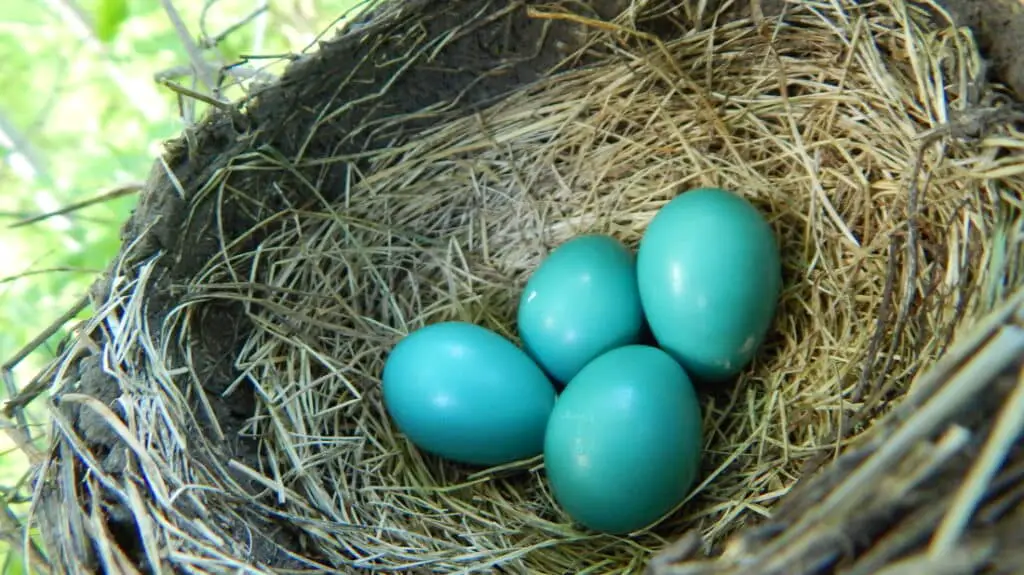
Conclusion
Our journey into the nesting habits of robins revealed a complex picture. While some robins do indeed reuse their nests, others opt for fresh construction with each breeding season. The factors guiding these decisions are manifold. Nesting success, predation risk, and the availability of resources all play pivotal roles in determining whether a robin will refurbish an existing nest or embark on the construction of a new one.
The adaptability of robins in their nesting habits showcases their ability to respond to changing circumstances. Those who reuse nests may benefit from the added protection that a well-established structure provides, while others may find the lure of starting anew too tempting to resist. This duality of behaviors reflects the flexibility that is often essential for survival in the natural world. Beyond the immediate question of nest reuse, our exploration underscores the interconnectedness of species with their environments. Robins, as with all organisms, are not isolated entities but integral components of their ecosystems. Their nesting choices are influenced by a delicate interplay of ecological factors, from the availability of nesting materials to the presence of predators and competitors.
As we conclude our investigation, we are left with a sense of wonder and admiration for the remarkable adaptations that robins have developed over countless generations. Their nesting habits are just one facet of their remarkable lives, a testament to the beauty and complexity of the natural world. Our understanding of these cherished birds deepens, and our curiosity about the intricate tapestry of life in our own backyards and beyond is piqued.

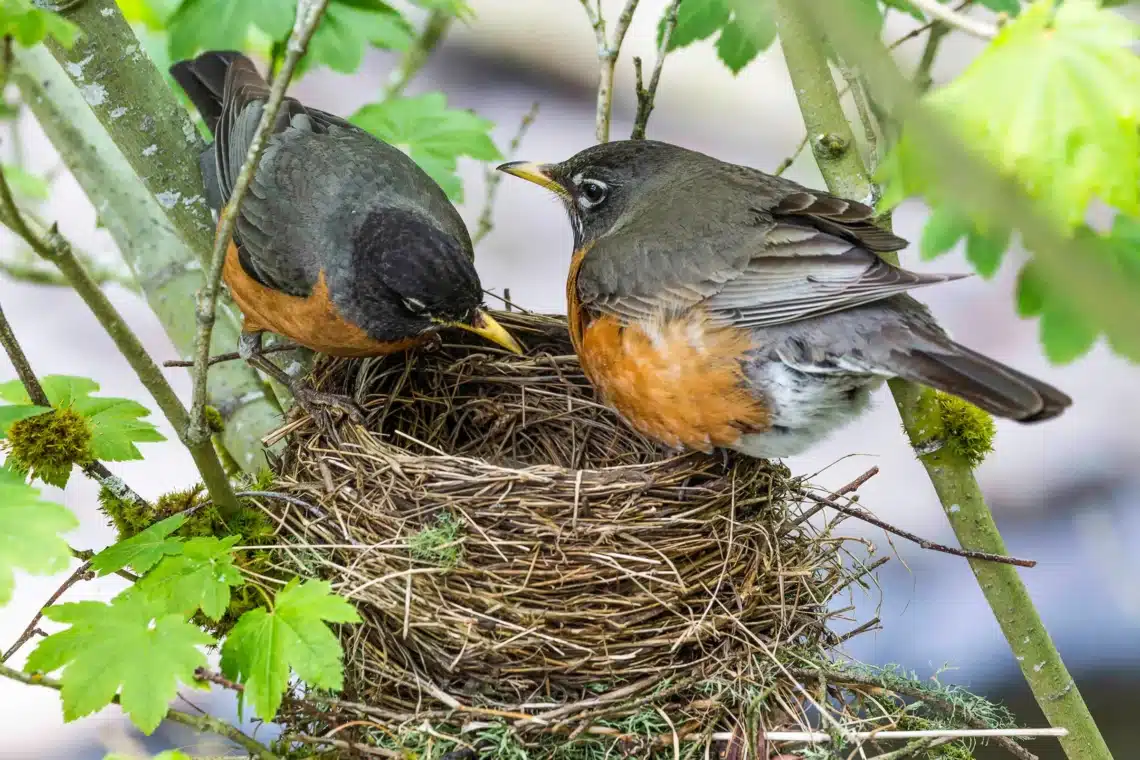
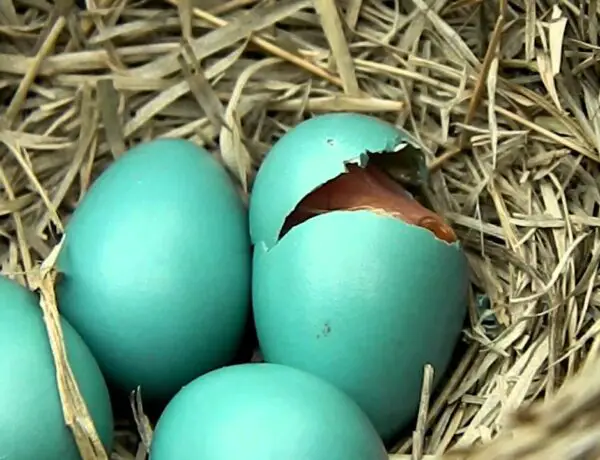
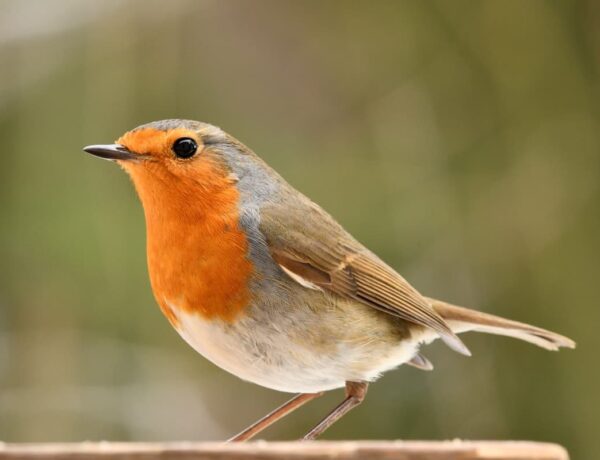
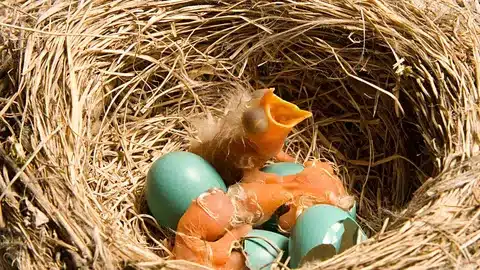
No Comments